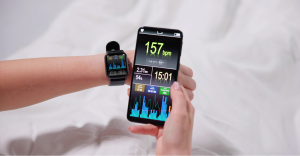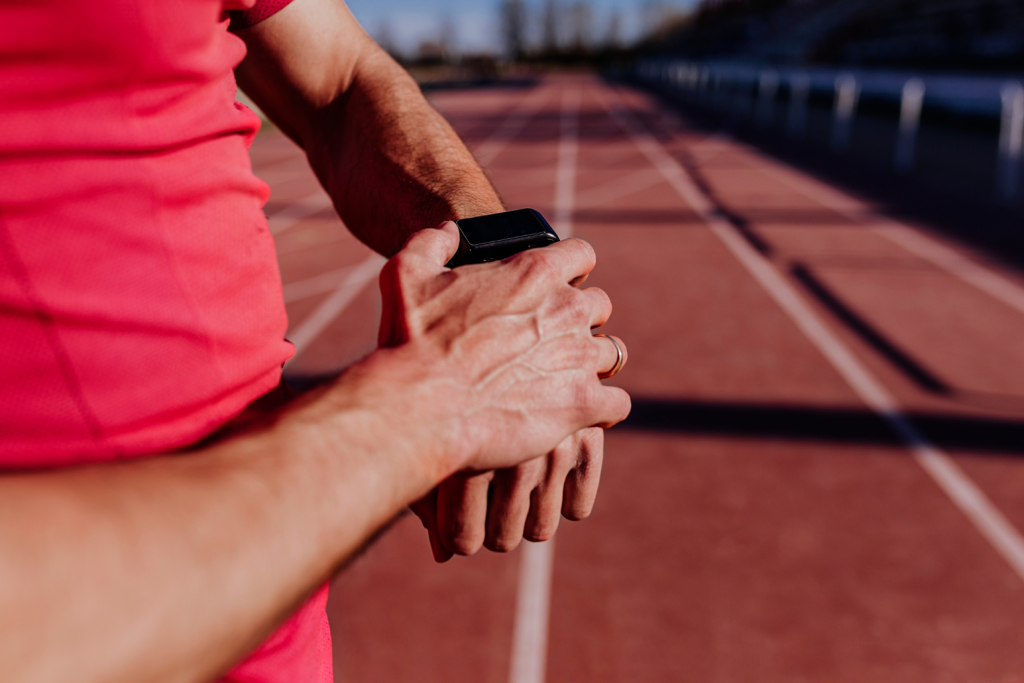Serious athletes should know a few things about smart watch calorie trackers and how to use the data to support their training and recovery. Let’s delve into what athletes should know about smart watch calorie trackers, understand their limitations and how to make the most of this data.
Active Calories vs. Resting Calories: What’s the Difference?
Your smartwatch distinguishes between active and resting calories:
- Active Calories: These are the calories burned during physical activities like running, cycling, or strength training like weightlifting. They reflect energy expenditure beyond your normal resting metabolic rate.
- Resting Calories: Also known as your Basal Metabolic Rate (BMR), these calories are burned to maintain basic bodily functions such as breathing, circulation, and temperature regulation while at rest.
Should you focus on total calories? Total calorie, the sum of active and resting calories, provides a comprehensive picture of your daily energy expenditure. For athletes, this total is critical for ensuring adequate fueling to meet training demands and recovery needs. However, monitoring active calories can help assess the intensity and impact of specific workouts.
Which Devices Are Most Accurate?
While smartwatches offer valuable insights, their accuracy in calorie counting remains a challenge. Recent research highlights both the progress and limitations in this area:
- A 2022 Systematic Review: This study evaluated wrist-wearable activity trackers, including popular models like the Fitbit Charge and Apple Watch. While these devices were accurate for step counts and heart rate measurements, their calorie counting showed significant variability, with mean absolute percentage errors exceeding 30% across brands.
Smart watches measure heart rate and step counts with a high level of accuracy, but they do not measure calorie burn reliably.
- Stanford University’s 2021 Research: Engineers developed a new calorie burn measurement system using sensors that track leg movement, rather than heart rate data, achieving a 13% error rate in calorie measurement. In comparison, commercial smartwatches exhibited error rates ranging from 40% to 80%.
Researchers concluded that the most reliable devices are:
- Apple Watch: Highly regarded for its advanced sensors and algorithms, it delivers reliable calorie estimates for cardio activities like running and cycling. It is less precise for strength training or high-intensity interval workouts.
- Garmin Devices: Popular among endurance athletes, this smartwatch excels in measuring calorie burn during running, swimming, and outdoor sports being a highly reliable tracker during, especially when GPS is utilized.
- Fitbit: Provides reasonable estimates for general activities and provides consistent step and heart rate data, but can sometimes overestimate calorie burn during less dynamic exercises.
- WHOOP 4.0: While not a traditional smartwatch, this wearable provides detailed and accurate metrics tailored for fitness enthusiasts focusing on recovery and strain.
Although current technology has limitations, advancements in wearable sensors and algorithms hold promise for better calorie tracking in the future. It is important to remember that these devices use generalized algorithms, which may not perfectly align with individual physiology.
Utilizing Calorie Data in Training: Benefits and Cautions
Benefits of Using Calorie Trackers for Athletes:
- Optimize Nutrition: Match calorie intake with energy expenditure to support performance and recovery.
- Track Progress: Monitor trends over time to adjust training plans and goals.
- Avoid Overtraining: Identify when you’re expending too much energy and risk under-recovery.
Words of Caution:
- Calorie estimates from smartwatches are very rough approximations with a wide margin of error. Take into account other factors like intensity, functional threshold power (FTP), heart rate, hills and tempo, fatigue and recovery.
- Relying solely on smartwatch data can lead to overtraining or underfueling if other factors like intensity, fueling, and recovery are not considered.
- Consult with a sport dietitian to contextualize this data within your overall training plan.
How to Find the Calorie Tracker on Your Smartwatch:

Apple Watch:
-
- Open the “Activity” app to view your daily Move (active calories), Exercise, and Stand metrics.
- Use the “Workout” app to track specific activities and analyze calorie burn.
Garmin:
-
- Navigate the “Calories” widget on the home screen.
- Use the Garmin Connect app to dive deeper into activity-specific calorie data.
Fitbit:
-
- On your device, swipe to the “Today” dashboard for a breakdown of active and total calories.
- The Fitbit app provides comprehensive insights into daily and weekly trends.
- Enable the “Exercise” mode for more detailed session data.
WHOOP 4.0:
-
- Review strain and recovery metrics in the WHOOP app for insights into your daily energy expenditure.
- Analyze detailed sleep and activity data to understand how your body is performing.
The Role of a Sports Dietitian
While smartwatches provide valuable insights, interpreting this data and applying it effectively requires expertise. Collaborating with a sports dietitian can help you:
- Personalize Nutrition Plans: Tailor calorie and macronutrient recommendations based on your unique energy expenditure.
- Prevent Underfueling: Ensure you’re meeting the demands of your training while maintaining overall health.
- Enhance Performance: Align your diet with training phases, whether you’re building endurance, strength, or recovering.
- Demystify Data: Help you understand the limitations of smartwatch calorie tracking and integrate it into a broader performance strategy.
A dietitian can interpret your smartwatch data in the context of your overall health and training regimen, providing a holistic approach to nutrition and performance.
Bottom Line
Smartwatches are incredible tools for athletes, offering insights into workout intensity, energy needs and mileage. By understanding the nuances of calorie tracking and working with professionals, you can transform raw data into meaningful action, fueling your training and achieving your goals more effectively.
Even though smartwatches are not accurate when it comes to calorie tracking, they can still be helpful tools for motivation and measuring mileage. If you’re starting your fitness journey, they’re a great way to encourage you to move more. Remember, it’s not just about the numbers, it’s about creating habits that support a healthy and active lifestyle. Use your smartwatch as a partner in this journey, not as a sole guide, and you’ll be well on your way to achieving your fitness dreams.
For personalized nutrition coaching and expert advice, book your 1:1 session with one of our elite sport dietitians.
Written by: Adriana de la Parra Sólomon, MSc








